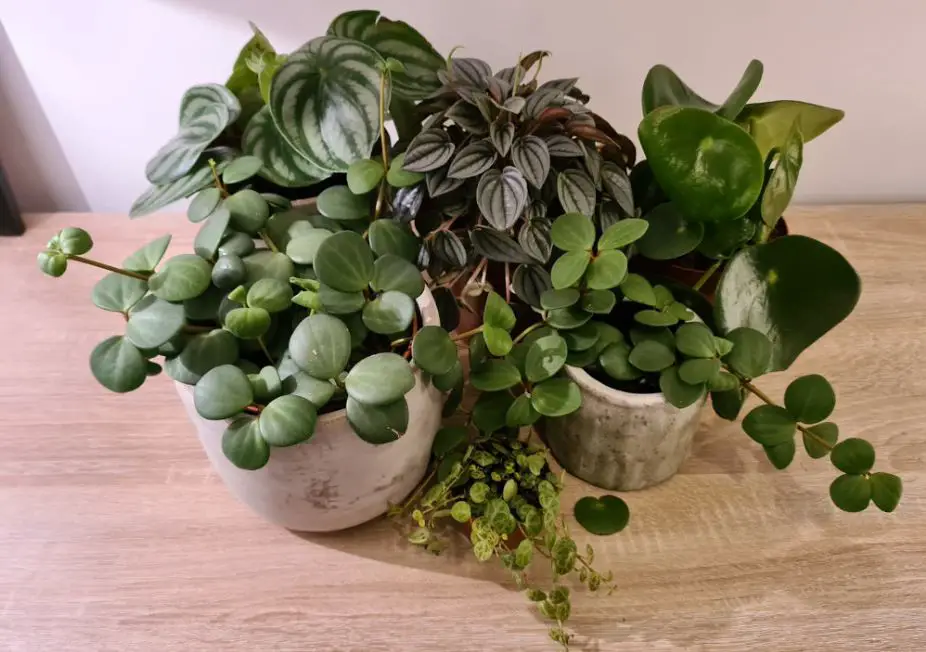The Peperomia houseplant is a lovely addition to your collection of indoor plants or a desk or table. Peperomia plants may fit in a small space wherever you want to place them because of their compact shape, and peperomia upkeep is simple.

Peperomia Types
Peperomias come in more than 1,000 different varieties, although not all of them are cultivated and produced to be sold to the general public. Arboretums or indoor exhibits in botanical gardens and plant collectors may have a unique diversity. You can add color to your indoor displays with a variety of Peperomia houseplants. The following are some of the Peperomias species that are most often found:
- Emerald Ripple Peperomia: Growing Peperomia caperata is a delight because of its heart-shaped leaves and waffle-like leaf texture. There may be a silvery or burgundy hue peeping through the green on the beautiful leaves and stems.
- Watermelon Peperomia: P. argyreia has elliptical-shaped leaves with silver streaks. If planted in a container big enough to allow for root growth, none of these Peperomia plants grow taller than or wider than 8 inches (20 cm). Plants often pile up and have hanging leaves.
- Baby Rubber Plant: Peperomia obtusifolia is more back straight. While some of these varieties of Peperomias have glossy, solid-green leaves, others exhibit white and gold variegation.
- P. obtusifolia ‘Minima’ is a dwarf specimen growing to a size around half that of the norm.
Peperomia Care
When cultivating a Peperomia, place the plant away from the sun in a medium to the low-light environment. Peperomia plants may also be grown with fluorescent lights.
Grow Peperomia in a light houseplant mixture with liquid fertilizer or coarse gravel to ensure that the plant’s roots get the essential air circulation for healthy growth. Despite routine watering, your peperomia plants may be withering because the roots are not receiving enough oxygen.
Water indoor Peperomia plants sparingly, and wait until the soil has dried to a level of up to 5 inches (13 cm) before watering it again.
After watering your indoor plants, fertilize them every so often with balanced plant food. In the summer, flush the plant with water to eliminate any salts that fertilizer has left behind.
Repot Peperomias in the spring, but be sure to use tiny pots unless you are growing them in a mix of containers.

